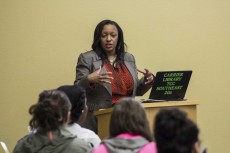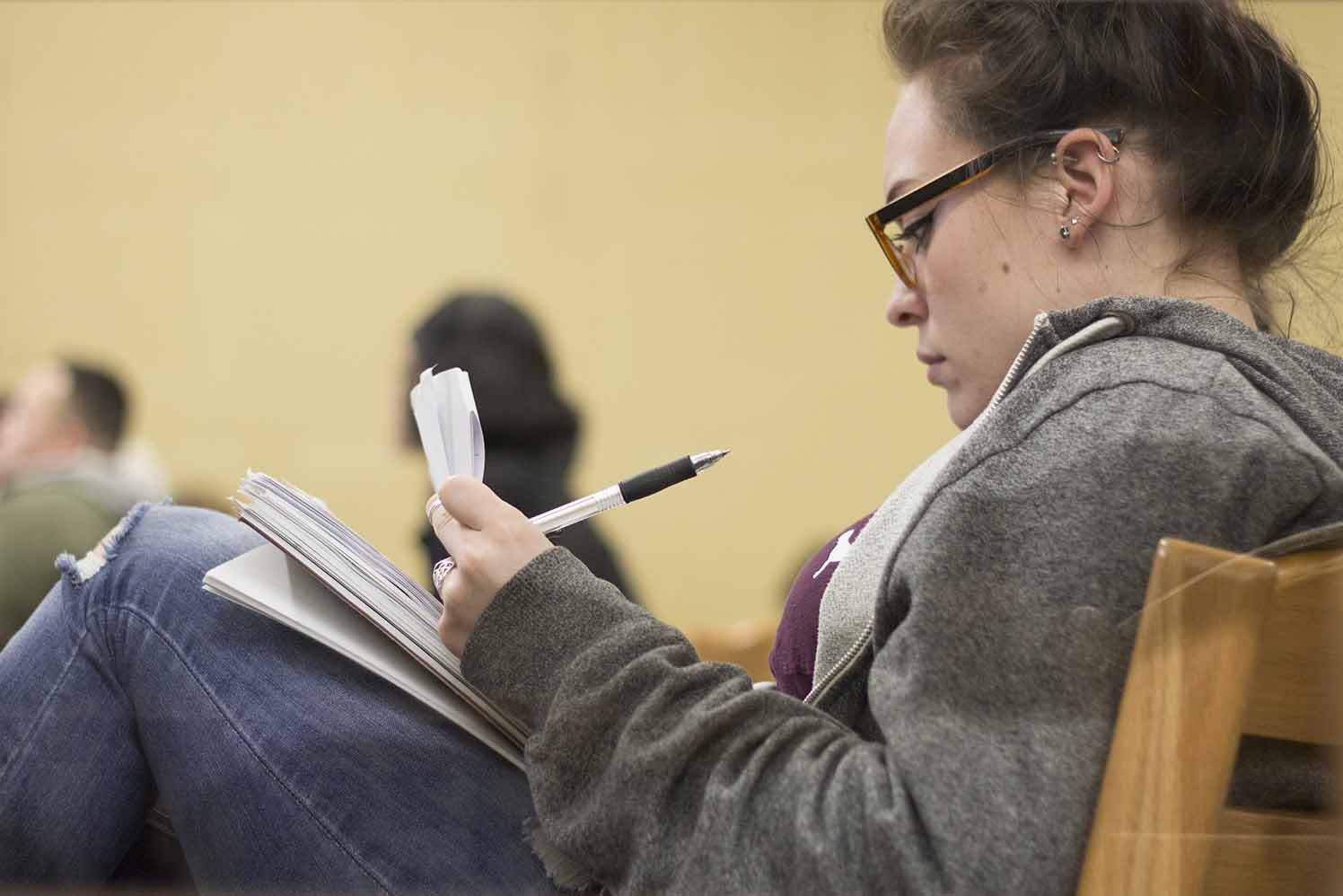By Colt Taylor/ reporter

With racing hearts, students slowly approach their class. With shaky legs and unsteady hands, they take their seats. It’s test day.
Tests don’t need to be an ordeal, however, SE English associate professor Benita Reed and speech instructor Rebekah Adderley said during Tackling Test Anxiety March 9.
Many students suffer from test anxiety. It’s no secret, and nothing to be ashamed of, they said.
“Nervousness is normal,” Reed said.
And the pair provided plenty of ways to handle nervousness. The five P’s are a collection of these techniques: prepare, practice, perform, preview and post-view.

Photos by Bogdan Sierra Miranda/The Collegian
Preparing for a test involves note taking and studying. When students take notes, clearly marking the important details or areas of difficulty will smooth out study time, Reed said. Annotating certain content with additional information learned in class also improves the quality of one’s study time.
If note taking is difficult, students could ask the professor if they have a copy of their own notes. Alternatively, Disability Support Services offers note takers who will take notes for those who struggle with it. Students who qualify can visit their home campus’ DSS office.
In addition to note taking, pictures of class activities, diagrams and others can be taken for later reference if allowed by the class instructor.
Notes are no help if they aren’t studied, however, Adderley said. Creating a study schedule is another part of preparing for a test. A good schedule should include the location, time and duration of study as well as the subject to be studied.
Beyond taking and studying notes, students should take steps to prepare their minds and bodies prior to a test, Reed said. Three nights before a big test or presentation, students should spend time resting while making sure to get a good night’s sleep. The night before the test, students should position materials where they will be easily reachable as well as pick out clothing the night before. Eating early before bed will increase quality of sleep.
Students should be sure to get eight full hours of sleep and still wake up early. Eating a full breakfast is easy to overlook, but a full stomach means one less distraction during a test.
Students should leave 15 minutes early and plan to arrive 10-15 minutes early to allow plenty of time to get prepared and relax before the test begins.
Next in the five P’s is practice. When studying alone or in groups, one has a number of strategies and tools to use. Alone, one can use flash cards, and in groups, students can quiz one another.
Apps such as Cram or Quizlett offer a variety of formats for studying alone or in groups, including a game-like option. Using association with words, locations and commonly used pictures can help students recall important details more easily, Adderley said.
While waiting for the test to begin, students should prepare themselves mentally, repeat positive affirmations to themselves and visualize positive outcomes.
“What you focus on is what you get,” Adderley said.
One should also take three deep breaths, stretch their limbs and meditate to clear the mind, Adderley said.
Now the time has come, and the test has begun. It’s time to preview and perform. Students should review the test before beginning, reading all instructions and expectations and making sure to identify different parts of the test such as multiple choice and short answer to help budget time accordingly, Reed said.
While taking the test, students should take advantage of a note card if allowed by the instructor. Highlighting or underlining keywords will help eliminate extraneous information. When students find a question they cannot answer, skipping it, marking it and returning later is the best course of action.
The DSS offers alternative testing options, including a quiet testing area if the classroom is too distracting, as well as longer test times.
Once finished with the test, students should resist the urge to turn it in immediately and sprint out of the building. A post-view of the test can mean the difference between a higher letter grade and a lesser one.
“A’s look much better on a transcript or resume,” Adderley said.
When finished, students should use any remaining time to review their answers and fill in any skipped questions. If there is no penalty for a wrong answer, then there’s no harm in guessing answers, they said.
The final step is submitting the exam and exhaling.
These techniques will help alleviate anxiety and reduce stress while keeping the mind free of distractions. However, students must still learn the information to pass, Adderley and Reed said.
“Don’t forget to study,” Reed warned.

